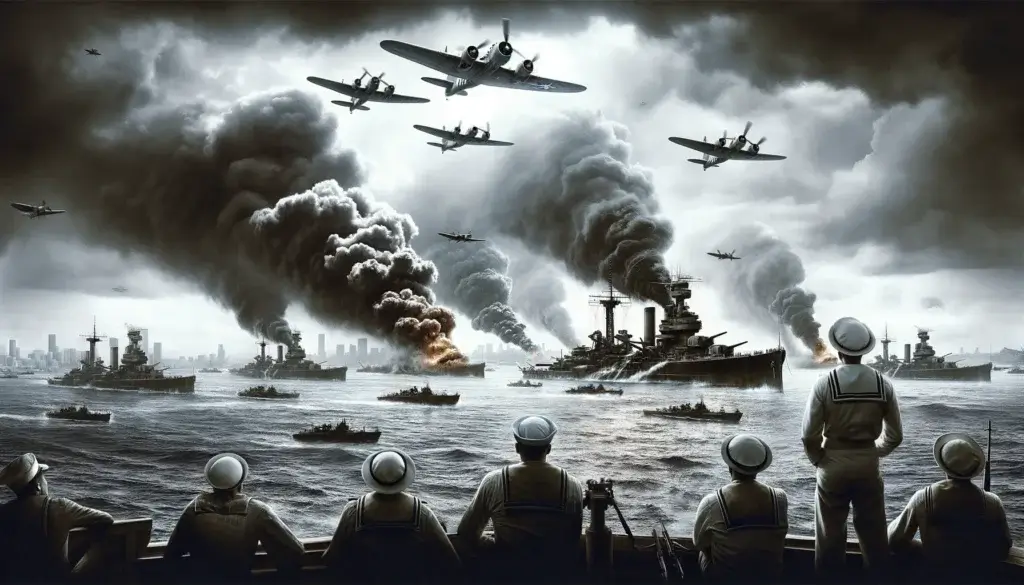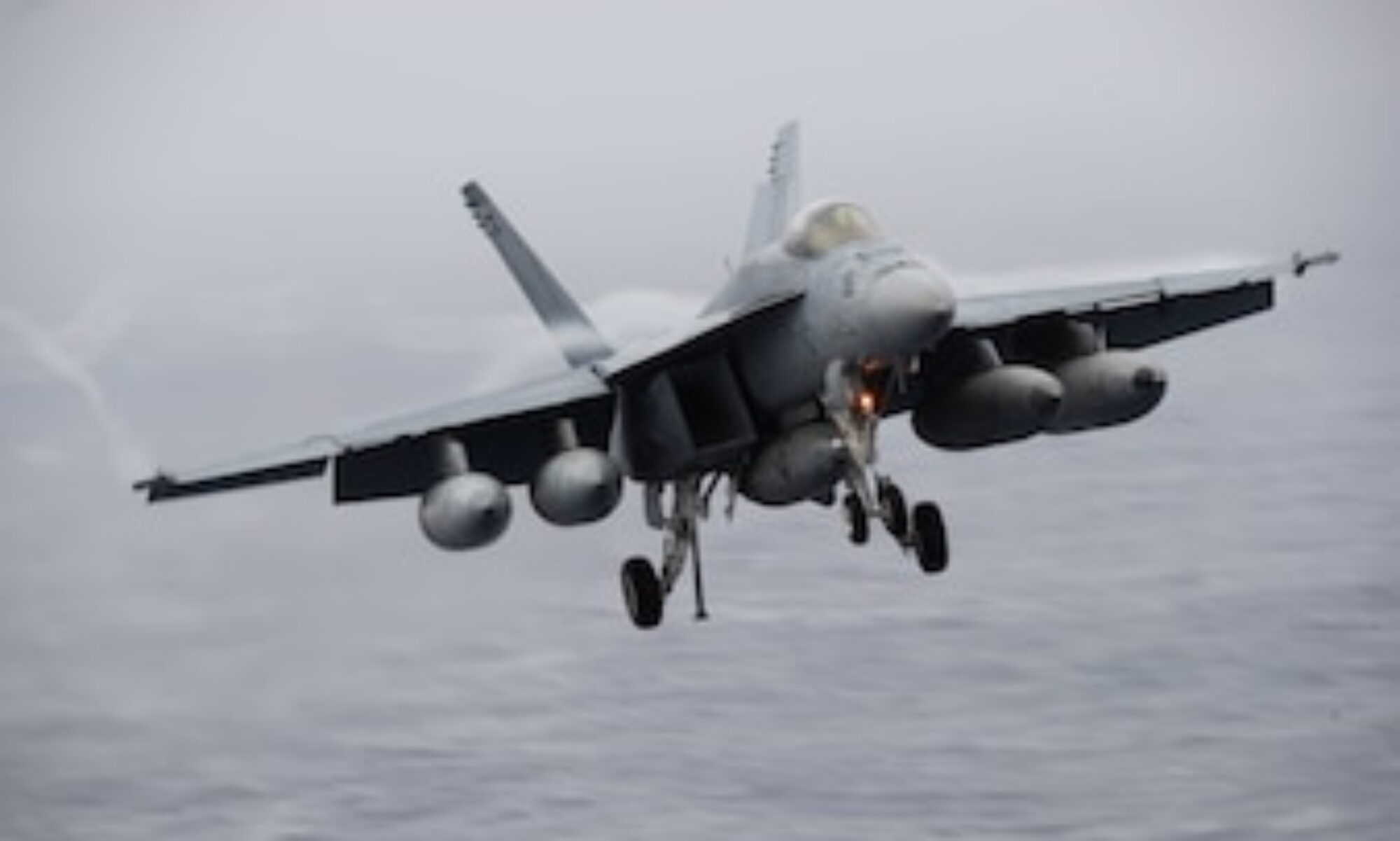
Echoes of History: Steering the Future in Charting the Course: Navigating the Future of American Naval Power – Reflecting on WWII’s Legacy in Current Naval Strategy
Welcome to our Insightful Series!

Welcome Members and Friends to ‘Charting the Course: Navigating the Future of American Naval Power,’ an essential series presented by Americans for a Stronger Navy. I’m Bill Cullifer, the voice behind this series and the founder of Americans for a Stronger Navy. With a thumbs-up, I warmly welcome you to the first episode in an eight-week journey that delves into the intricacies of naval power and the pivotal issues shaping our future security and stability.
Personal Insights & Historical Significance:
As a former Destroyer Navy Sailor and an advocate for naval advancement, I bring not only my naval experience to the table but also a passion for innovation and strategic thinking. Our series embarks on its voyage today, December 7, 2023 a date steeped in history that reminds us of the sacrifices made for peace and the vigilance required to maintain stability. Understanding WWII is crucial to comprehending the ‘why’ behind our series, ‘Navigating the Future of American Naval Power.’
Though we may not be meeting in person, each episode of this series is an open invitation to engage in meaningful discussions. Together, we’ll explore the current state and future prospects of American naval power. I’ll be here alongside Dale A. Jenkins, Senior Advisor and author “Diplomats and Admirals” to dissect and discuss each topic with you, our dedicated audience.
Podcast Series Schedule:
We’ve lined up eight thought-provoking sessions, with a new podcast released weekly, allowing us time to dive deep and discuss the nuances of each topic.
- Today – December 7, 2023 – Orientation and Bonus Track WWII: We kick off the series by introducing its themes and discussing the enduring legacy of Pearl Harbor Day in the context of today’s naval challenges.
- December 14, 2023 – Inaugural Discussion: Join Dale A. Jenkins, Senior Advisor at Americans for a Stronger Navy and author of “Diplomats and Admirals” and me as we set the stage for the critical conversations that will unfold throughout the series.
Weekly Episodes:
Speakers and Sessions
Episode 1: Dr. Steven Wills, Navalist for the Center for Maritime Strategy at the Navy League of the United States. – The Anatomy of Naval Strate – December 28, 2023
Dive deep into the world of naval strategy with Dr Steven Wills, who brings a keen eye to the intricacies of strategy development, its challenges, and the integration of diverse naval capabilities. This session promises a thorough exploration of what constitutes U.S. Navy strategy, its objectives, and how it shapes the nation’s maritime future.
Episode 2: Dr. Bruce Jones, Senior Fellow – Foreign Policy, Center for East Asia Policy Studies, Strobe Talbott Center for Security, Strategy, and Technology, Brookings Institution. – Maritime Power Through History and Future – January 4, 2024
Join Dr. Bruce Jones for a historical and global perspective on maritime power. This session connects past and present maritime dynamics, exploring the influence of trade, climate change, and geopolitical shifts. Gain insights into how historical narratives of maritime prowess inform the current dynamics of power and influence in the global maritime domain.
Episode 3: Dr. Sam Tangredi, Leidos Chair of Future Warfare Studies and professor of national, naval, and maritime strategy at the U.S. Naval War College. January 11, 2024.
Embark on a technological journey with Dr. Sam Tangredi, an authority on the integration of AI in naval warfare. This session addresses how AI, big data, and human-machine interfaces are revolutionizing naval operations. Learn about the ethical, legal, and strategic dimensions of AI in the Navy and its profound impact on future naval force structure and capabilities.
Episode 4: Dr. Scott Savitz, Senior Engineer at the RAND Corporation – Innovation at Sea: Non-Lethal Weapons and Uncrewed Platforms – .January 18, 2024.
Explore the cutting-edge of naval innovation with Dr. Scott Savitz, focusing on non-lethal weapons and uncrewed platforms. Understand how these technologies are reshaping naval strategy and operations, their potential risks, and their role in maintaining strategic advantage over global rivals. This session promises insights into the future of naval warfare and national security.
Episode 5: Bryan Clark, senior fellow and director of the Center for Defense Concepts and Technology at Hudson Institute – The Technological Horizon of Naval Warfare – February 1st, 2024.
Delve into the future with as we examine the broad implications of emerging technologies like AI, big data, machine learning, and more in naval warfare. This session covers the integration challenges these technologies pose, their strategic impact, and their role in enhancing interoperability and effectiveness with global allies.⁰
Episode 6: Seth Cropsey, President Yorktown Institute. – Navigating Today’s Naval Challenges – February 8, 2024.
Join us as we explore the complexities of modern naval power with Seth Cropsey, a seasoned expert with extensive experience in the U.S. Naval and Department of Defense realms. This session offers an in-depth look at the current challenges and opportunities facing the Navy, particularly in the context of global rivalries. Discover the strategic insights that set the stage for a comprehensive understanding of contemporary naval dynamics.
Episode 7: Jon Rennie, co-founder, president, and CEO of Peak Demand Inc., – Leadership and Culture in Modern Naval Power –February 15th, 2024.
Conclude our series with Jon Rennie, focusing on the crucial elements of leadership, culture, and the balance between tradition and modernization within the Navy. This session highlights the importance of leadership in navigating the multifaceted challenges and opportunities in naval power, offering a holistic view of the organizational dynamics at play.
Engagement and Exploration:
Each episode is designed to be a treasure trove of insights and expertise, and I’ll be here with Dale to unpack each session in our post-show debriefs. Mark your calendars, and prepare for a series that charts not just the course of a podcast, but the journey of American naval power into the future.
Additional Information:
- Schedule of Events: Stay informed of upcoming episodes and special events. Visit our schedule page for the latest updates and detailed information about each episode in the ‘Charting the Course’ series.
- Contact Information: Your feedback and questions are invaluable to us. Please feel free to reach out via our contact page or email us directly at the contact us page at StrongerNavy.org
- We’re here to engage with you and answer any queries you may have.
- Featured Resource – ‘Echoes of History: Steering the Future in ‘Charting the Course”: For a deeper dive into the themes of our series, don’t miss our comprehensive analysis in “Echoes of History.” This resource provides rich insights into how historical naval strategies inform our current and future naval power. Available here.
- Stay Connected: Follow us on Facebook and Twitter for regular updates, behind-the-scenes content, and more ways to engage with our community and experts.
BONUS TRACK: WWII’s Influence on Modern Naval Strategy: Complete Course Content
- Introduction: Welcome, everyone. Today, we’re going to explore how World War II fundamentally reshaped naval warfare and its enduring impact on today’s naval strategy. This understanding is crucial for grasping the discussions in our ‘Charting the Course’ series.
- Section 1: The Shift in Naval Warfare: Let’s start with a significant shift during WWII: the transition from battleship dominance to the era of the aircraft carrier. Before WWII, battleships were seen as the epitome of naval power. However, the Battle of Midway in 1942 marked a turning point. In this battle, U.S. carrier-based aircraft sank four Japanese fleet carriers, demonstrating the potency of air power in naval engagements. This victory marked the decline of the battleship and the rise of the aircraft carrier as the new capital ship of naval forces.
- Section 2: Submarine Warfare and the Battle of the Atlantic: Next, let’s turn to submarine warfare. German U-boats posed a significant threat to Allied shipping during the Battle of the Atlantic. Their strategy was to disrupt Allied supply lines and it was devastatingly effective. German U-boats sank around 2,779 ships, underscoring the critical role of submarines in modern naval strategy. This aspect of naval warfare emphasized the need for anti-submarine tactics and technology, which continue to be a pivotal element in contemporary naval defense.
- Section 3: Technological Advancements: Technological advancements during WWII were extraordinary. Radar and sonar, for instance, revolutionized naval engagements. These technologies allowed navies to detect and track enemy ships and aircraft over greater distances and with greater accuracy than ever before. Another significant breakthrough was in codebreaking. The Allied efforts to decrypt the Enigma machine, led by teams like those at Bletchley Park, were vital. The intelligence gathered from these efforts, especially during the Battle of Midway, provided the Allies with a critical advantage, shaping many naval engagements.
- Section 4: Amphibious Operations and Joint Forces: Amphibious operations were another crucial aspect of WWII. The D-Day landings at Normandy are a prime example. This operation involved over 5,000 ships and landing craft and marked one of the largest amphibious military assaults in history. The success of such operations depended on seamless coordination between naval, air, and land forces, exemplifying the evolution of joint-force operations. This integrated approach to military operations has since become a staple of modern military strategy.
- Section 5: Strategic and Geopolitical Outcomes: In the aftermath of WWII, the global geopolitical landscape underwent dramatic changes. The U.S. emerged as a dominant naval power. This shift influenced the formation of NATO, a collective defense pact that played a significant role in naval strategy during the Cold War and continues to impact geopolitical dynamics. The post-WWII era saw the U.S. Navy becoming a central tool in American foreign policy, with its ability to project power globally.
- Conclusion: To conclude, the lessons and transformations from WWII continue to influence modern naval strategy. Understanding these historical contexts is key to navigating the complexities of contemporary naval challenges. As we proceed with our ‘Charting the Course’ series, keep these insights in mind as they provide a valuable perspective on current and future naval strategies.
Click here to follow along with the Charting the Course-Navigating the future of Naval Power

